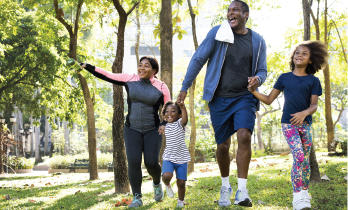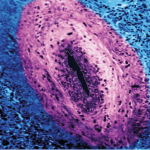
Rawpixel.com / shutterstock.com
If you’re a middle-aged woman who makes a New Year’s resolution to work out regularly and you keep that promise for only six months, don’t think that will go far in protecting your joints. Researchers in Australia have homed in on the details of the sustained physical activity required to reduce the risk of joint symptoms.
Their work, “Potential Effect Modifiers of the Association Between Physical Activity Patterns and Joint Symptoms in Middle-Aged Women,” appeared online Dec. 6, 2017, ahead of print in Arthritis Care & Research. Geeske Peeters, PhD, is the Atlantic Fellow for Equity in Brain Health at the Global Brain Health Institute, which is based at the University of California, San Francisco, and Trinity College in Dublin, Ireland. A co-author on the study, Dr. Peeters says, “We wanted to find out whether body mass index (BMI), menopausal status and hormone therapy (HT) would modify the association between physical activity (PA) joint symptoms in later middle-aged women.”
Using data on 6,661 participants from the Australian Longitudinal Study on Women’s Health, the researchers sought information on joint pain and stiffness, PA, height and weight, menopausal symptoms and HT use. The women, who were born between 1946 and 1951, completed health surveys every three years from 1998–2010.
Physical Activity Helps
Dr. Peeters says, “In our study, a low level of physical activity was defined as spending between 50 and 500 MET minutes/week. The unit ‘MET minutes/week’ indicates the time spent per week in an activity of a certain intensity. Activities with greater intensity have higher MET values. An example of how 50 MET minutes/week can be accrued is walking a total of 15 minutes per week. Examples of how 500 MET minutes/week can be accrued include jogging or swimming 75 minutes per week, or walking 150 minutes per week.”
“Our findings suggest women who maintain at least 50–500 MET minutes/week throughout midlife have a lower likelihood of developing joint symptoms than women who do less than 50 MET minutes/week,” Dr. Peeters says. “[Although] the exact minimum of physical activity required to reduce the risk of joint symptoms is not known, it is likely the minimum will fall within the 50–500 MET minutes/week range.”
Menopause & Hormone Therapy?
“While biologically plausible, the current study found no evidence that age at menopause and hormone therapy influence the association between physical activity and joint symptoms,” she says. “This may not be surprising given the contrasting findings in the literature around the associations of menopause and hormone therapy with joint symptoms.”
Regarding how to talk patients to motivate them to action, Dr. Peeters notes, “Rheumatologists and other health professionals may reassure middle-aged women that being physically active is more likely to be beneficial for their joints than detrimental. Obese women may have concerns that an active lifestyle could damage their joints. The current findings take away these concerns. [Although] lower levels of physical activity appear to be sufficient to reduce the risk of developing joint pain and stiffness, 150 minutes of moderate- to vigorous-intensity activity per week is recommended for cardiovascular and metabolic benefits.”
“The key message is that at least low levels of physical activity should be maintained throughout mid-age for women to benefit from the protective effects on joint symptoms in later mid-age,” Dr. Peeters says. “Particularly in obese women, a physically active lifestyle contributes to reducing the risk of developing joint symptoms.”
Looking forward, Dr. Peeters indicates there is definitely room for more data gathering. “[Although] this study involved data from 6,661 women who were followed more than 12 years, an even larger sample would have allowed us to explore the different patterns of physical activity in greater detail. The analyses were based on crude measures of physical activity and joint symptoms based on self-report. Adding more specific and objective measures to the study would strengthen the evidence, and in combination with a larger sample size, would facilitate more detailed exploration of the influence of type and intensity of activities, and the type and severity of the joint symptoms. Biomarkers, such as inflammation markers and imaging, could provide further insight into the biological pathway explaining the association between physical activity and joint symptoms.”
Simple & Practical—Just What We Need
Rebecca Manno, MD, MHS, is an assistant professor of medicine in the Division of Rheumatology at Johns Hopkins University in Baltimore, and she admires the researchers’ work. “My first instinct is to congratulate the authors on tackling this important issue,” she says. “It is difficult to study physical activity, but they managed to have a very large sample size, as well as a long study period. Their research represents a solid contribution to the literature.”
“In essence, this study took a grounded approach to asking a simple and very practical question, ‘If someone is active, based on the degree of activity, what chances does he or she have of developing worsening joint symptoms?’” Dr. Manno says. “As doctors, we often find ourselves trying to explain to patients why it’s important not to sit on the couch or play video games for 18 hours per day, and these are new data we can lean on during those conversations. To date, it has been challenging to prove this association between joint longevity and activity, although we all believe it exists.”
Dr. Manno also likes the fact the study was based on self-report data. “They didn’t look at X-rays or WOMAC (i.e., the Western Ontario and McMaster Universities Osteoarthritis Index) scores,” she says. “They simply asked, ‘Do you have joint pain?’ Even though in this study there was not any measure of joint damage, it is powerful that they used patient language, which is what clinicians hear every day. They were asking how the patients feel, and that is important for how we manage their symptoms.
‘In essence, this study took a grounded approach to asking a simple & very practical question.’ —Dr. Manno
“Self-reported data have pitfalls, but it is even more powerful that despite those weaknesses, these researchers still found an association that intuitively makes sense—people who were physically active were less likely to have joint symptoms over time,” Dr. Manno says. “And the amount of physical activity did not need to be excessive. Of course, not having joint symptoms doesn’t mean they do not have or will not develop arthritis, but having fewer joint symptoms is very important if you are that patient.”
Dr. Manno notes several areas she’d like to see examined going forward. “The work did not [consider] the added benefits of prolonged physical activity or exercise, such as cardio fitness, stronger muscles, improved functional mobility, etc.,” she says. “Also, it would be interesting to know—for people who have arthritis and joint symptoms—how physical activity [could] mitigate symptoms over time. Perhaps future studies will address that.”
Elizabeth Hofheinz, MPH, MEd, is a freelance medical editor and writer based in the greater New Orleans area.
Reference
- Peeters, G, Edwards KL, Brown WJ, et al. Potential effect modifiers of the association between physical activity patterns and joint symptoms in middle aged women. Arthritis Care & Res (Hoboken). 2017 Dec 6. [Epub ahead of print]

